Factors to Consider Before Choosing a Small Rabbit Breed
Space availability
Time commitment for care and interaction
Family dynamics and compatibility
1. Netherland Dwarf
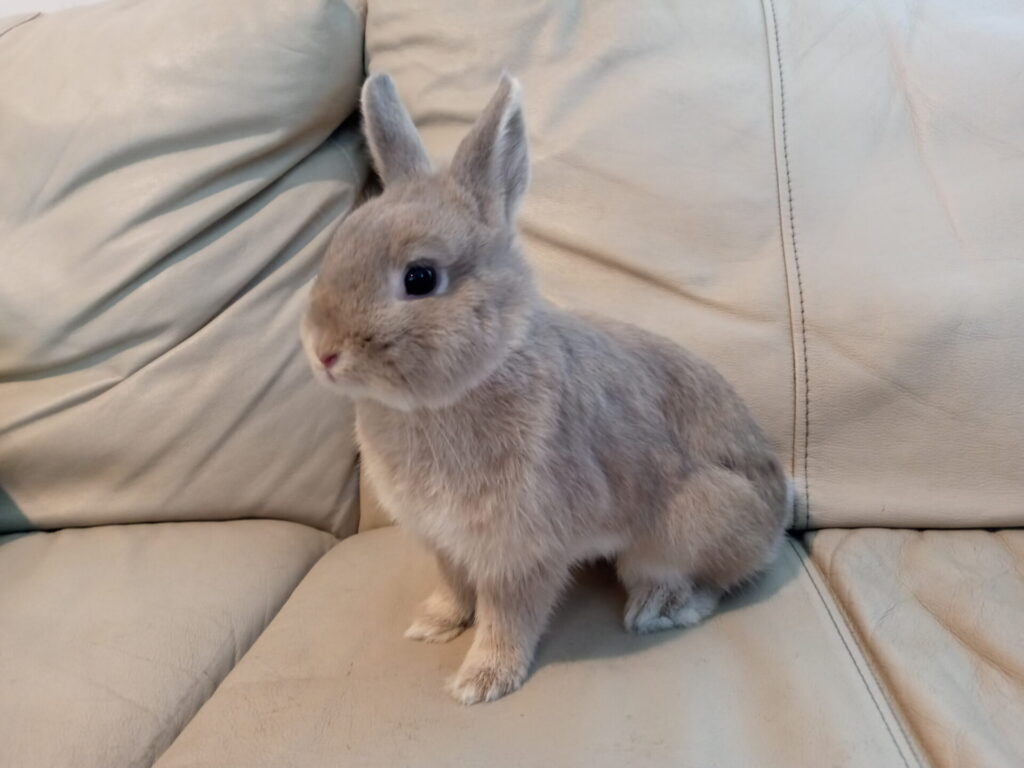
- Description: Netherland Dwarfs are one of the smallest rabbit breeds, weighing only 1-2.5 pounds. They have a compact, rounded body and short, erect ears.
- Coat: Their fur is dense and glossy, coming in various colors including white, black, blue, and tortoiseshell.
- Origin: Originating from the Netherlands, they were bred for their small size and adorable appearance.
- Temperament: Netherland Dwarfs are known for their lively and friendly personalities, enjoying human interaction and playtime.
2. Mini Lop

- Description: Mini Lops are small to medium-sized rabbits with a stocky build and lop ears that hang down to the sides of their face.
- Coat: Their fur is dense and plush, available in a wide range of colors and patterns.
- Origin: Developed in Germany during the 20th century, Mini Lops are a popular choice for their cute appearance and gentle nature.
- Temperament: Mini Lops are known for their sweet and docile temperament, making them great pets for families with children.
3. Holland Lop
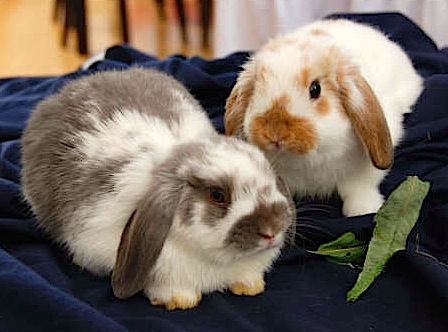
- Description: Holland Lops are small rabbits with a compact, rounded body and distinctive lop ears that hang down close to their cheeks.
- Coat: Their fur is soft and dense, coming in various colors and patterns.
- Origin: Originating from the Netherlands, Holland Lops were bred by crossing French Lops with Netherland Dwarfs to create a smaller version.
- Temperament: Holland Lops are known for their gentle and affectionate nature, enjoying cuddles and attention from their owners.
4. Jersey Wooly
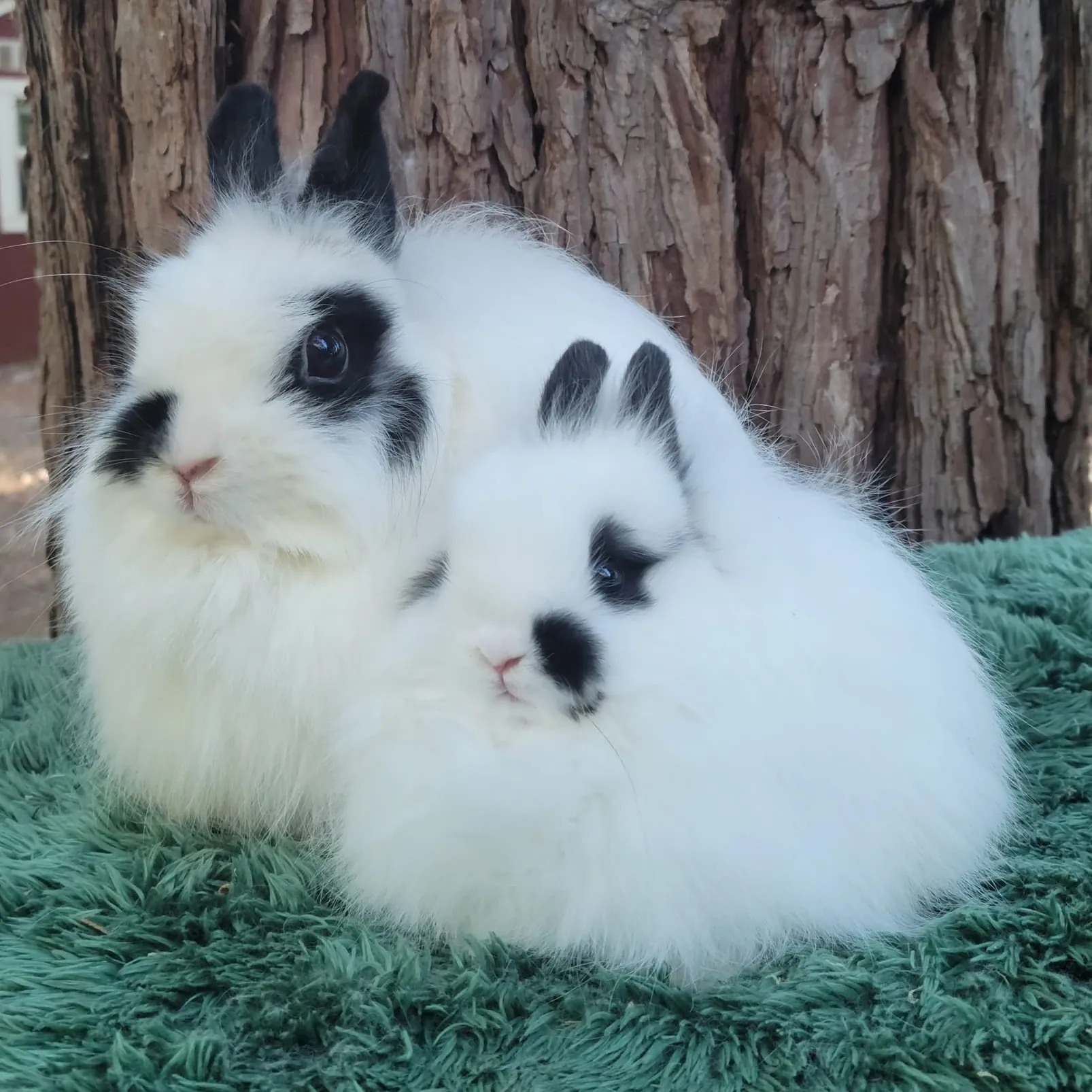
- Description: Jersey Woolys are small rabbits with a compact body and a distinctive woolly coat that requires regular grooming.
- Coat: Their fur is soft and woolly, available in various colors including chestnut, agouti, and white.
- Origin: Developed in the United States during the 1970s, Jersey Woolys were bred for their unique fur texture and friendly temperament.
- Temperament: Jersey Woolys are known for their friendly and outgoing personalities, enjoying interaction with their owners and other pets.
5. Lionhead
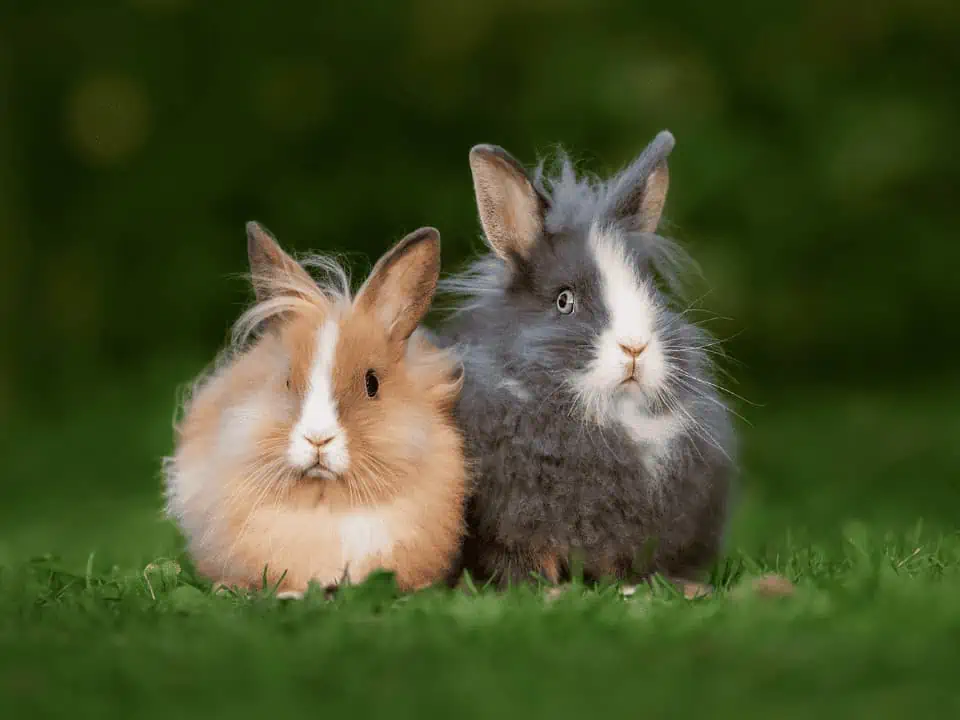
- Description: Lionheads are small rabbits with a compact body and a distinctive mane of fur around their head, resembling a lion’s mane.
- Coat: Their fur is medium in length, with a dense mane around their head and a softer coat on the rest of their body.
- Origin: Originating from Belgium, Lionheads were bred by crossing various small rabbit breeds to achieve their unique appearance.
- Temperament: Lionheads are known for their playful and inquisitive nature, enjoying exploring their surroundings and interacting with their owners.
6. Mini Rex

- Description: Mini Rex rabbits are small to medium-sized with a compact, muscular body and short, velvety fur.
- Coat: Their fur is dense and plush, with a unique texture known as “rexing” that gives it a velvety feel.
- Origin: Developed in the United States during the 20th century, Mini Rex rabbits were bred for their distinctive fur texture and friendly temperament.
- Temperament: Mini Rex rabbits are known for their calm and gentle personalities, enjoying cuddles and affection from their owners.
7. Polish
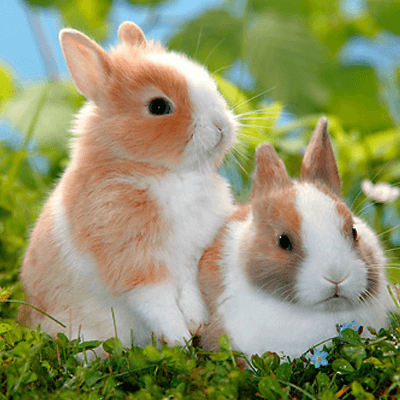
- Description: Polish rabbits are small and compact with a rounded body and short, erect ears.
- Coat: Their fur is short and glossy, coming in various colors including black, blue, and chocolate.
- Origin: Originating from England, Polish rabbits were bred for their small size and adorable appearance.
- Temperament: Polish rabbits are known for their curious and energetic personalities, enjoying exploring their environment and interacting with their owners.
8. Dwarf Hotot
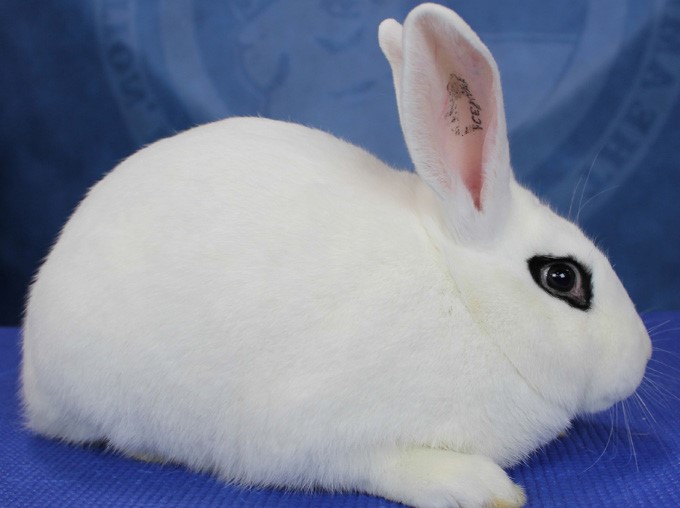
- Description: Dwarf Hotots are small rabbits with a compact body and distinctive eye markings, known as “eyeliner,” around their eyes.
- Coat: Their fur is short and plush, with a soft texture and a glossy sheen.
- Origin: Originating from France, Dwarf Hotots were bred for their unique eye markings and friendly temperament.
- Temperament: Dwarf Hotots are known for their lively and sociable personalities, enjoying attention and interaction from their owners.
9. English Angora
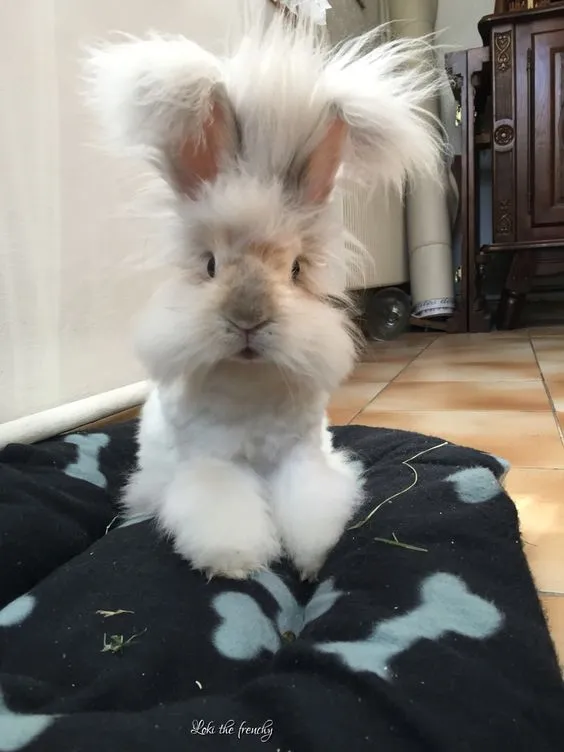
- Description: English Angoras are small to medium-sized rabbits with a compact body and long, woolly fur.
- Coat: Their fur is long and silky, requiring regular grooming to prevent matting and tangling.
- Origin: Originating from England, English Angoras were bred for their luxurious fur and gentle temperament.
- Temperament: English Angoras are known for their calm and gentle personalities, enjoying cuddles and affection from their owners.
10. Havana
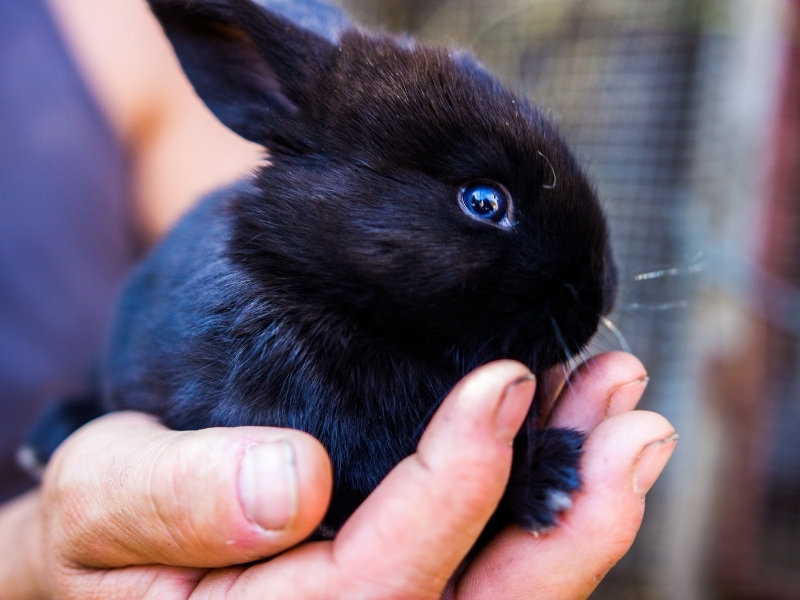
- Description: Havana rabbits have a medium-sized body with a compact build. They typically weigh between 4.5 to 6.5 pounds and stand about 8 to 9 inches tall. One of their most striking features is their glossy coat, which comes in shades of chocolate brown. The fur is dense and smooth, giving the Havana a luxurious appearance.
- Coat: The coat of the Havana rabbit is its most defining characteristic. It is short, dense, and glossy, resembling the texture of satin. The color is uniform and rich, resembling the deep tones of chocolate. The sheen of their coat adds to their overall elegance and appeal.
- Origin: The Havana rabbit originated in the Netherlands in the early 20th century. It was developed through selective breeding with the goal of achieving a rabbit with a solid chocolate-colored coat. The breed was later recognized and standardized by rabbit breed associations, gaining popularity for its unique appearance and friendly demeanor.
- Temperament: Havana rabbits are known for their calm and friendly temperament. They are affectionate and enjoy human companionship, often forming strong bonds with their owners. Havanas are curious by nature and enjoy exploring their surroundings. They are also known for their gentle disposition, making them suitable pets for families with children. Havanas thrive on attention and will often seek out interaction with their owners.
Care and Maintenance Tips for Small Rabbit Breeds
Providing a suitable habitat
Balanced diet and nutrition
Regular grooming and hygiene
Socialization and interaction
Common Health Issues in Small Rabbit Breeds
Dental problems
Gastrointestinal stasis
Respiratory infections
Obesity
Conclusion
Choosing a small rabbit breed for your home can bring immense joy and companionship. By considering factors like space, time commitment, and compatibility, you can find the perfect furry friend to join your family.
FAQs (Frequently Asked Questions)
1. What makes small rabbit breeds different from larger ones?
Small rabbit breeds are typically more compact in size, making them ideal for indoor living spaces and easier to handle.
2. Are small rabbit breeds suitable for families with children?
Yes, many small rabbit breeds are suitable for families with children, thanks to their gentle and friendly temperaments. However, it’s essential to supervise interactions between rabbits and young children to ensure both parties are safe and comfortable.
3. Do small rabbit breeds require special care compared to larger breeds?
While the basics of rabbit care remain similar across breeds, small rabbit breeds may require some specific considerations. For instance, their compact size means they may need smaller living spaces and different handling techniques. Additionally, some small breeds, like those with long fur, may need more frequent grooming to maintain their coat health.
4. How can I ensure my small rabbit stays healthy and happy?
Ensuring the health and happiness of your small rabbit involves several key aspects. Providing a balanced diet with plenty of hay, fresh vegetables, and occasional treats is crucial. Regular veterinary check-ups help monitor your rabbit’s health and catch any issues early. Additionally, providing ample opportunities for exercise, mental stimulation, and socialization contributes to your rabbit’s overall well-being.
5. Are small rabbit breeds prone to any specific health issues?
Like all rabbits, small breeds are susceptible to certain health issues, although the prevalence may vary. Dental problems, such as overgrown teeth or dental malocclusion, are common in rabbits of all sizes and can lead to significant health issues if left untreated. Gastrointestinal stasis, which is a slowing or cessation of gut motility, can also affect rabbits and is often linked to diet and stress. Respiratory infections can occur, especially in rabbits housed in damp or poorly ventilated environments. Additionally, small breeds may be prone to obesity if overfed or given inadequate exercise.





















